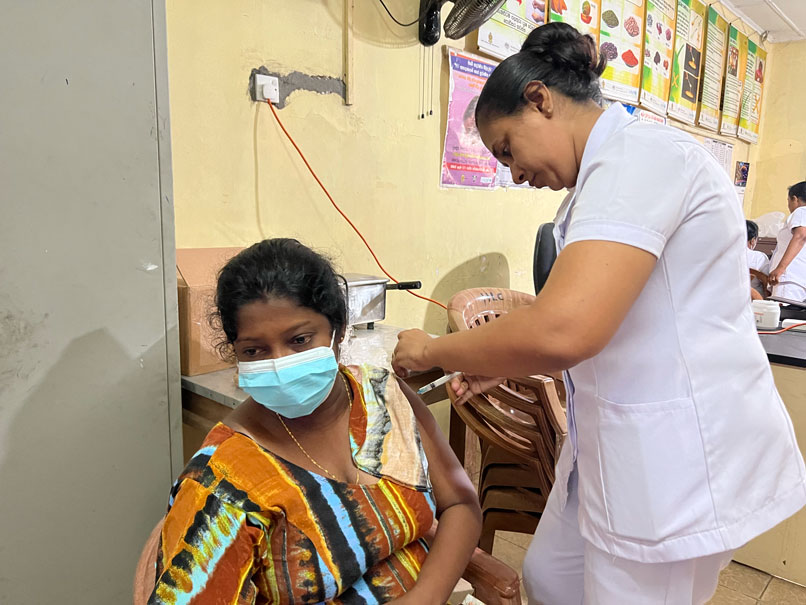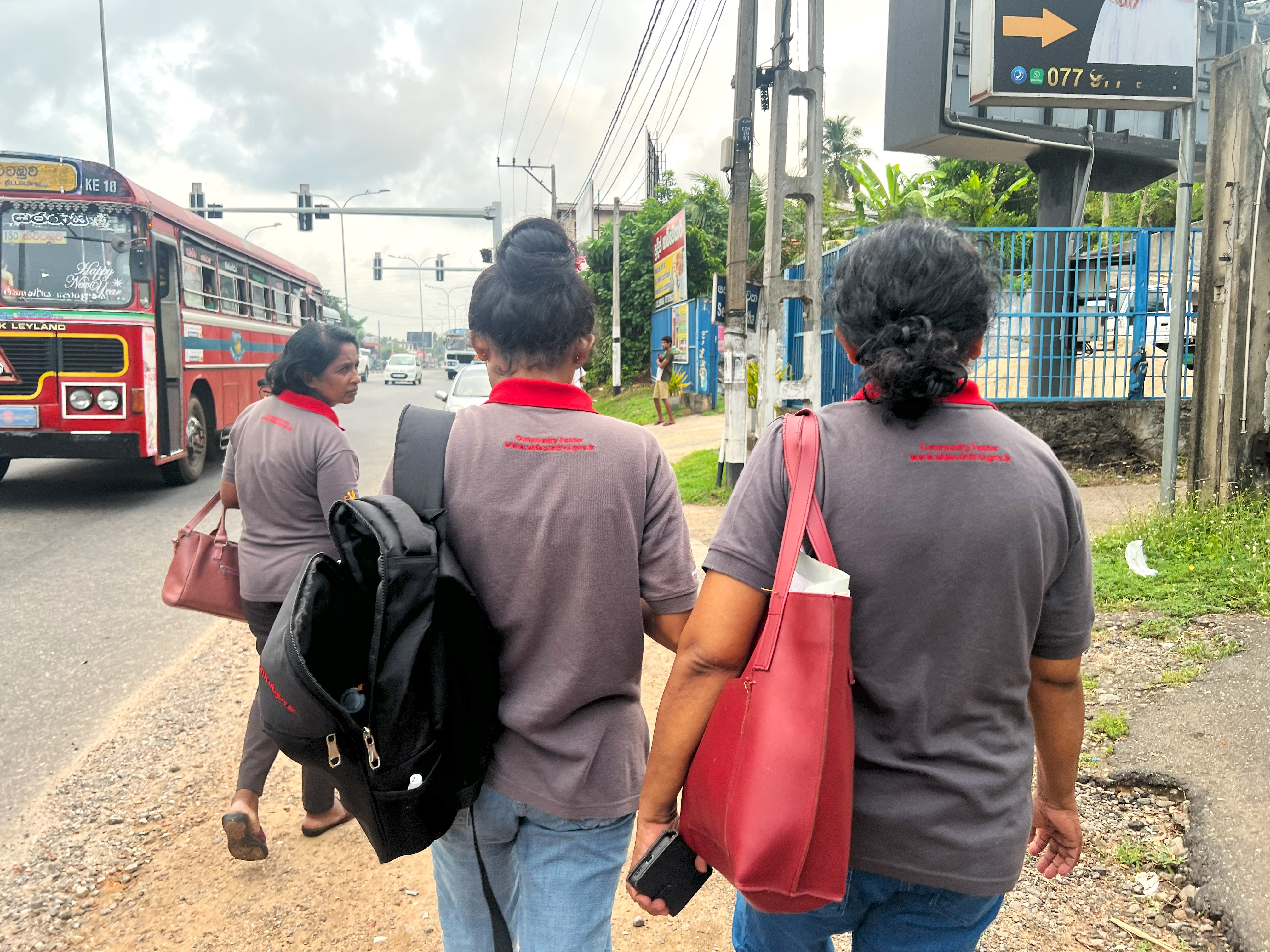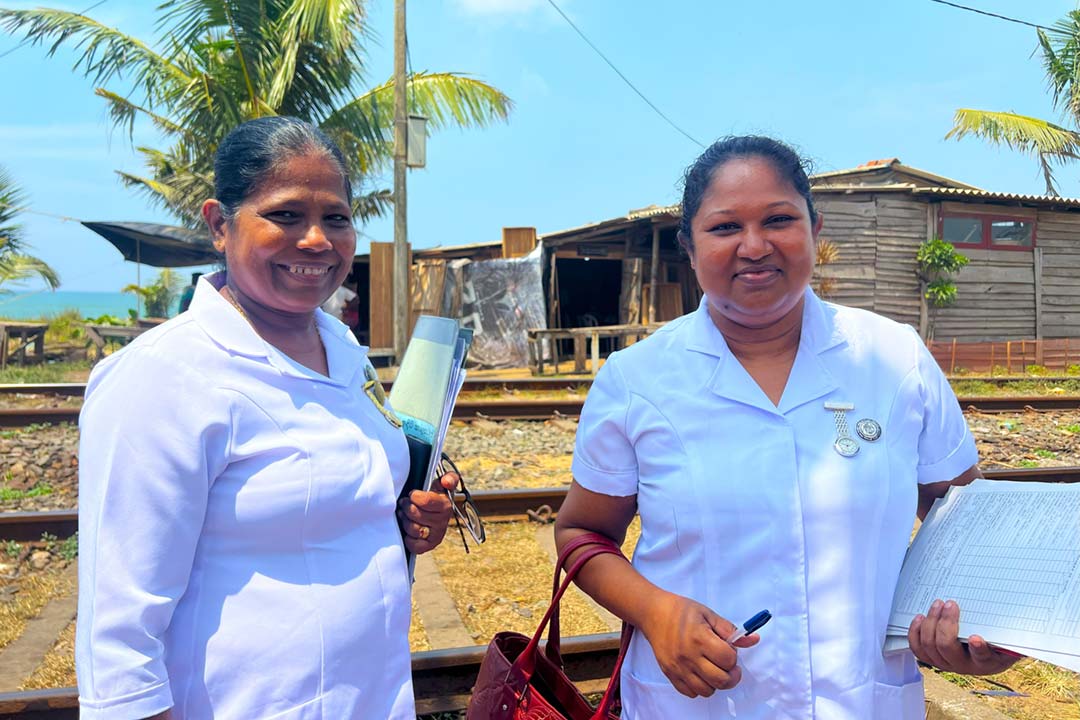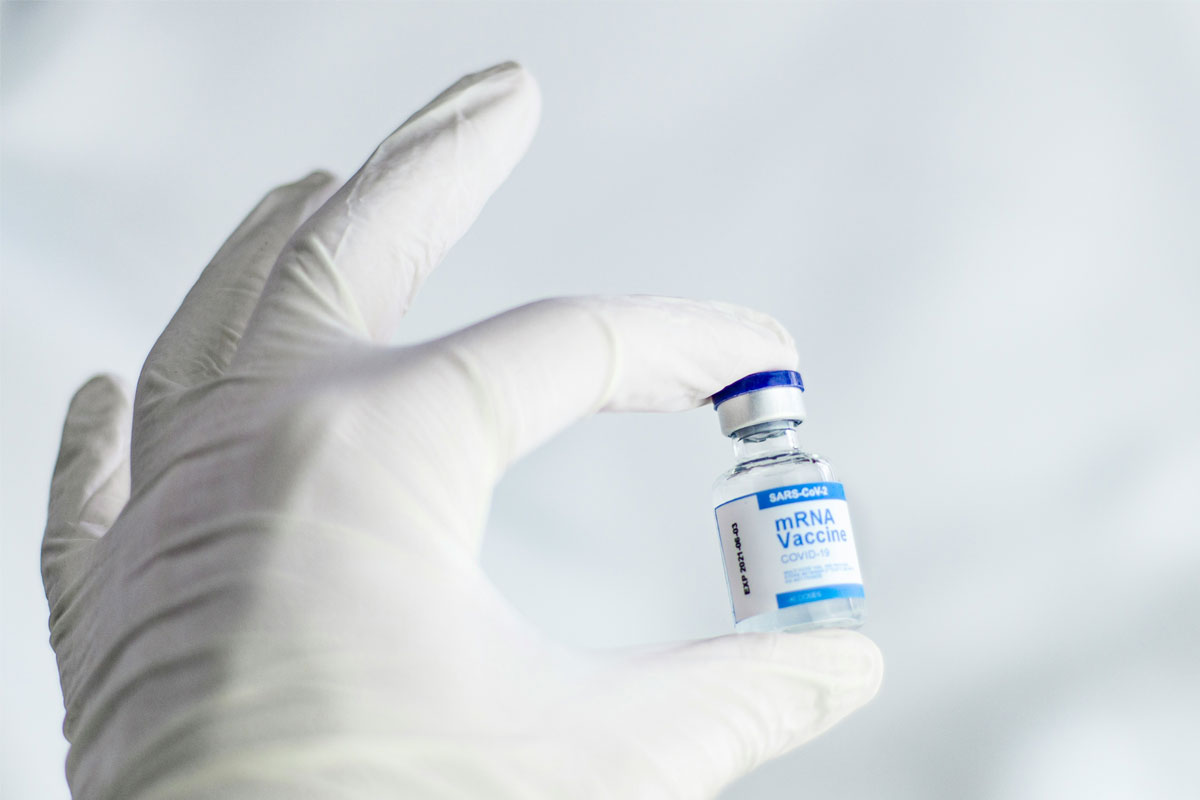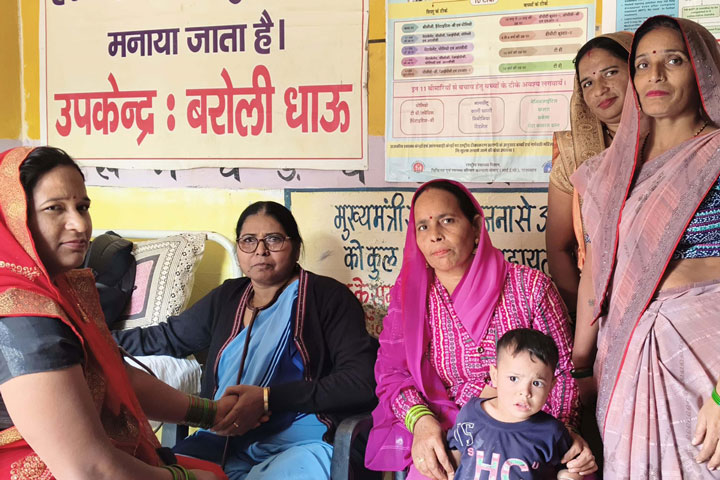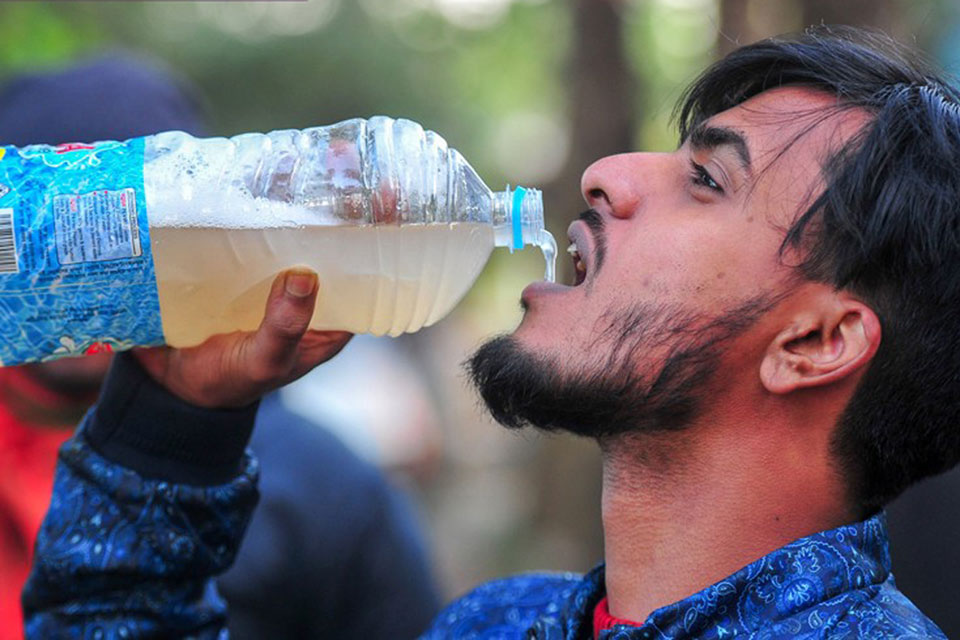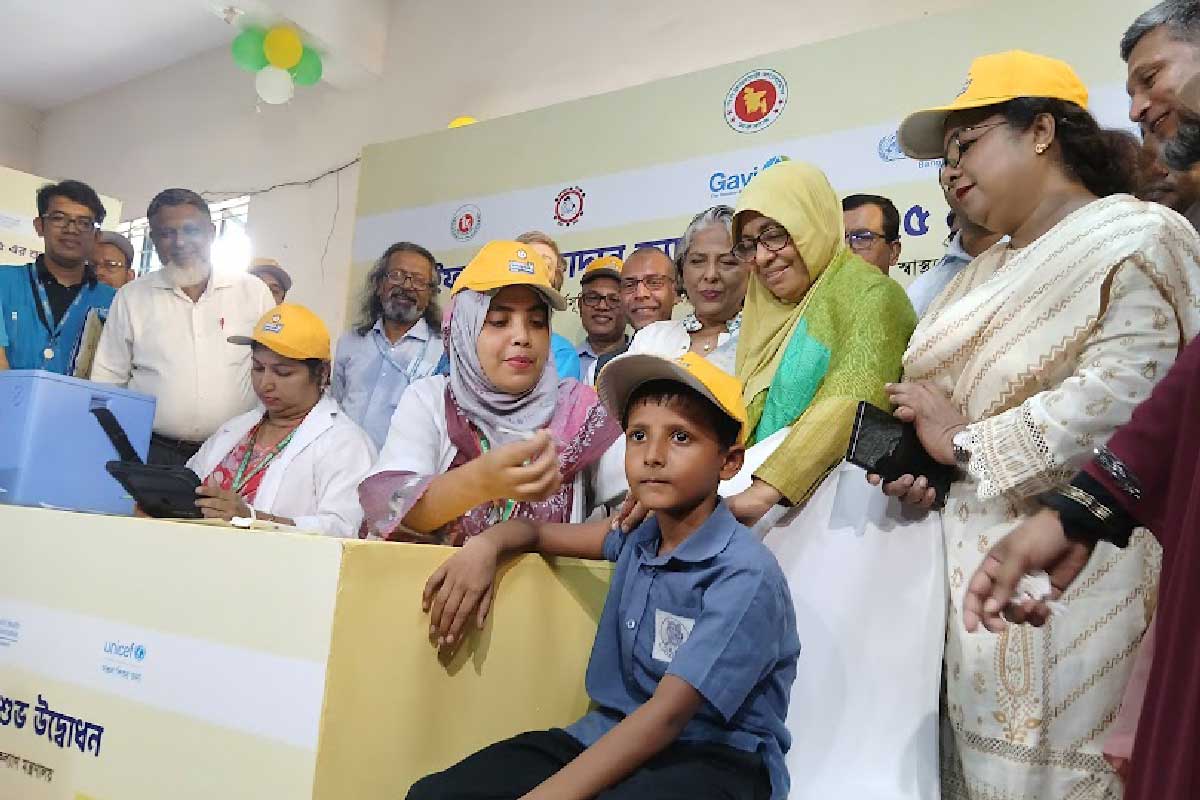How Sri Lanka’s immunisation system – one of the region’s strongest – is weathering an economic crisis
Years of investment in medical personnel, social trust, infrastructure and vaccines constitute a strong foundation, and support from international partners has gone a long way.
- 6 June 2025
- 6 min read
- by Aanya Wipulasena
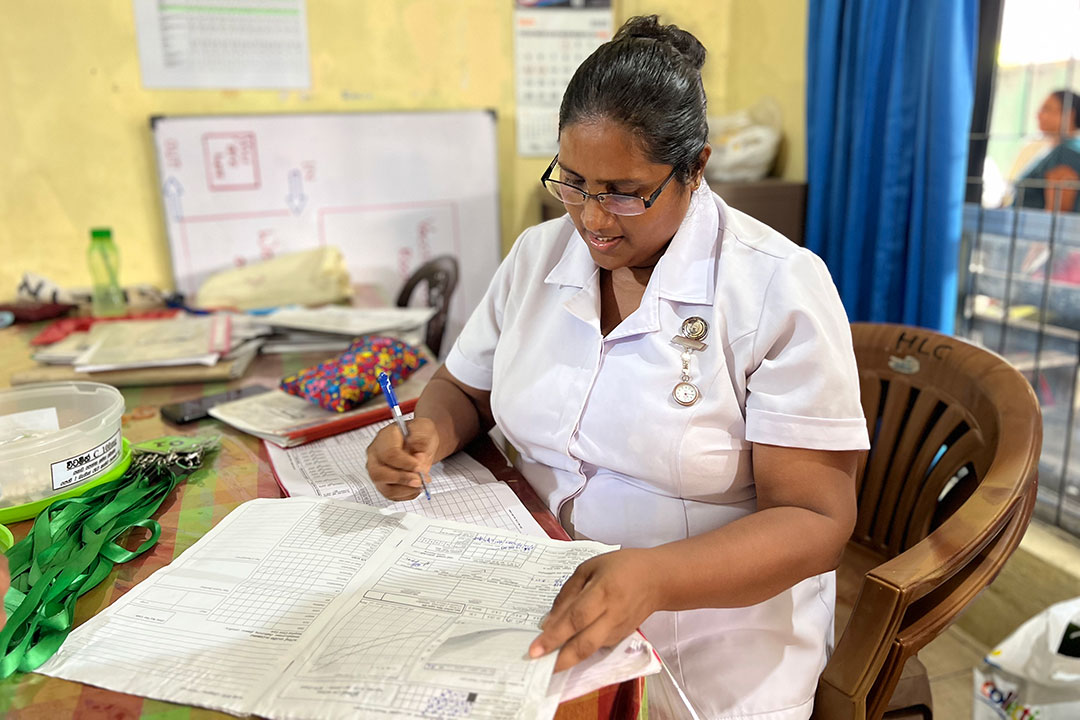
M. P. Nirmala, 26, is a few weeks pregnant with her first baby. It is an entirely new world for her, and navigating the journey into motherhood can feel overwhelming. But she is confident that both she and her baby will be healthy and safe: they are in good hands.
At the biweekly clinic at Divisional Hospital Thalangama, about 9 km from Colombo, a midwife examines her. Health officials at the clinic will closely monitor the young mother, and when her baby is born, they will ensure that the child remains healthy too.
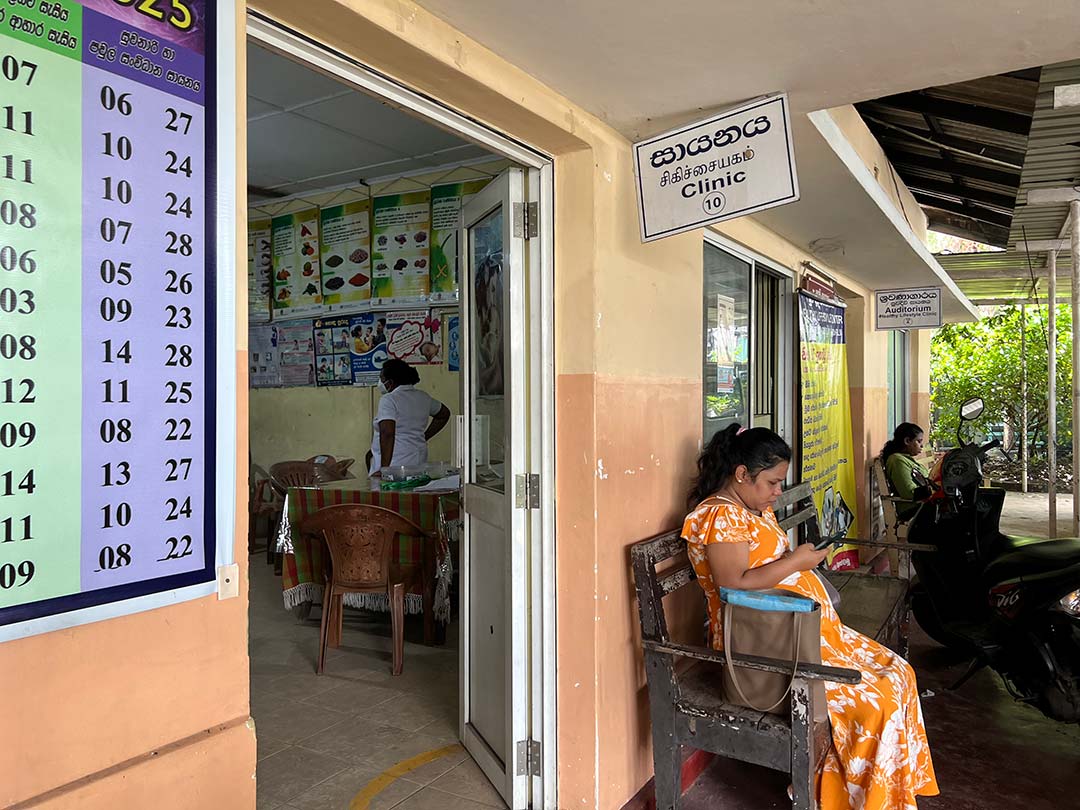
Credit: Aanya Wipulasena
“Even if I forget something, like a vaccination, the midwife reminds me about it,” Nirmala said. “The health officials are very attentive to our well-being. I know I can get everything related to my pregnancy and child’s health done in one place,” she said.
The Chief Midwife at the hospital, W. A. M. M. Weerasekara, is part of an efficient team that provides comprehensive healthcare at the clinic. They maintain meticulous records of each mother and her child, to ensure no one falls through the gaps.
“We advise newly married couples on maintaining their health. When a woman becomes pregnant, we oversee her overall well-being, ensure she receives the necessary nutrition for the baby, and make sure she is properly vaccinated. After birth, we ensure the baby is immunised and healthy. As the child grows, the cycle begins again,” Weerasekara said, adding that this service is provided both at the clinic and during home visits.
“I have been working as a midwife for over a decade and seeing the mothers and children in my care healthy and happy brings me the greatest joy,” she said.
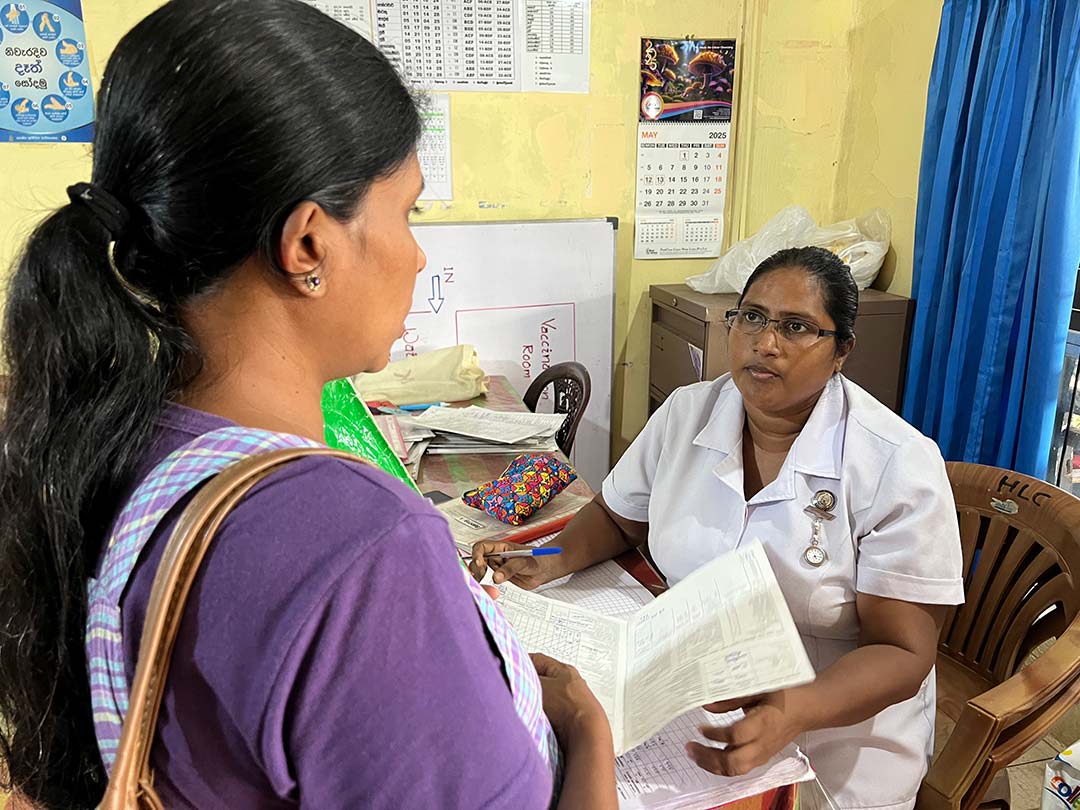
Credit: Aanya Wipulasena
Decades of dedication
Sri Lanka’s healthcare system is one of the most-lauded in the region. The island nation initiated its Expanded Programme on Immunization (EPI) in 1978 with six childhood vaccines. Over time, new vaccines have been gradually introduced to the country’s immunisation schedule.
Dr Nimal Gamagedara, Consultant Medical Epidemiologist at the National Epidemiology Unit, Ministry of Health, said that it took the island nation over a decade to reach the 80% coverage among target population. A “lot of effort” went into making the community fully aware of the importance of this vaccination programme, he said. But those efforts have paid health dividends.
“In Sri Lanka, community awareness of these EPI programmes is very high at the moment,” he said. “Even if the child is born, if the mother is not told by anybody to take vaccines, she still knows her child must receive vaccines at the age of two months, at the age of four months, at the age of six months, at the age of nine months and so on because of the high community awareness.”
Sri Lanka can now boast having reached over 95% coverage of all basic childhood vaccines. The effects of that are clear. “Now you can’t see polio cases in the country, no rubella cases, no neonatal tetanus cases, no diphtheria cases,” he said.
Have you read?
An extended hand
International partner organisations including Gavi, the Vaccine Alliance, have played a fundamental role in helping Sri Lanka’s primary healthcare system develop. Gavi’s contributions, in particular, have included support for health system strengthening and for vaccine procurement, both of familiar vaccines and vaccines that were previously unavailable via the public immunisation system.
Sri Lanka is a middle-income country – that is, it doesn’t automatically qualify for the level of support the poorest countries in the world can expect from the Vaccine Alliance. But during Sri Lanka’s recent economic crisis, Gavi stepped up assistance in order to help Sri Lanka sustain its laudable primary healthcare gains amid crisis, through its Middle-Income Countries (MICs) Approach. The time-limited support package has covered procurement of almost all vaccines to cover the paediatric and adolescent population since 2023. “During this time [the economic crisis], we had limited funds for vaccines. We had the priority for vaccines, while at the same time we had other priorities as well from the curative side – management of clinical patients and so on,” Dr Gamagedara said. “At the same time, with Gavi support we could transfer that fund to other essential health services. So, we could maintain our vaccination programme very smoothly without any vaccine shortages.”
Major assets, minor liabilities
The cost of vaccines is inevitably a recurring one, but Sri Lanka’s investments in its vaccine cold chain and distribution systems are paying off long-term. Dr Dhammica Rowel, Health and Nutrition Officer at UNICEF Sri Lanka, explained, “Over the years, the Epidemiology Unit developed a very good stock management system. There is a central vaccine store where they stock vaccines for about six months. Then there are the regional vaccine stores in every district in the country, where they store vaccines for a period of two months. In each Medical Officer of Health office there are ice lined refrigerators (ILRs) and other refrigerators where they stock vaccines adequate for the month,” she said, adding that during the COVID-19 pandemic, UNICEF supported to further strengthen this system.
A strong cold chain maximises the opportunity for the vaccines Sri Lanka buys to make an impact – in other words, for each dose to protect one child.
But even with sound logistics in place, a small minority of children still risk missing out. Though Sri Lanka has a notably robust culture of vaccination, pockets of vaccine hesitancy remain. This is a challenge Sri Lanka is busy trying to get a closer look at.
“We have now supported the Epidemiology Unit in conducting a vaccine hesitancy study. Again, the good thing about Sri Lanka is because the country has a very good surveillance system. They know every child who has been vaccinated fully and who has not been vaccinated – by name,” Dr Rowel said.
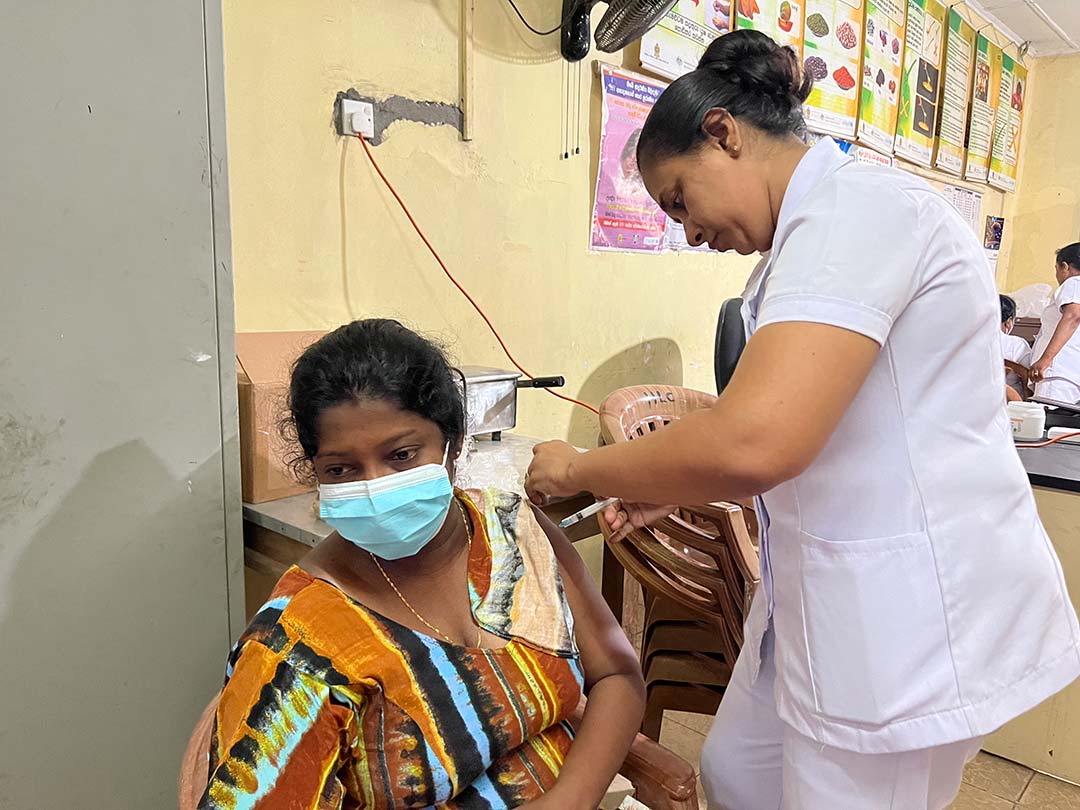
Credit: Aanya Wipulasena
This means the health officers know the families, localities and other information to locate unvaccinated children and reach out to them, to engage with parents on vaccination, and hopefully, to soothe their concerns.
Dr Rowel calls Sri Lanka’s immunisation programme “one of the best” in the region. A lot of factors and many years of work underpin that designation.
Nirmala, the soon-to-be-mother in Thalangama, may not know the anatomy of the efficient system into which she is stepping; she may not be able to tell you much about the scale of Sri Lanka’s investment in vaccines, in tech, in medical savvy. She may not know much about the international partnerships helping keep the show on the road, or the years of consistency that have constructed a safety net of herd immunity, and strong bonds of trust between medics and community members.
But she knows enough: “I know that me and my child are safe,” she said.
